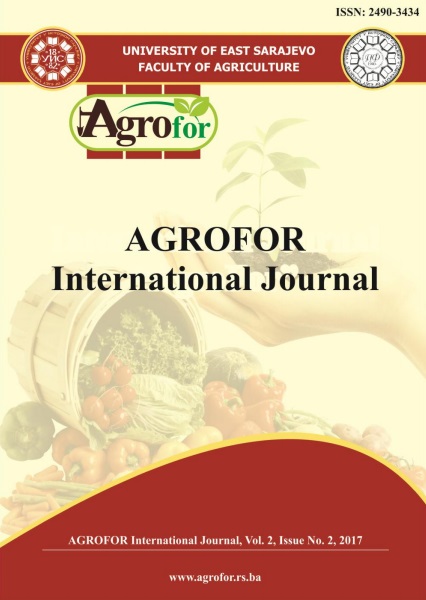THE MOST COMMON DISEASES OF ORNAMENTAL PLANTS IN THE ENTITY OF REPUBLIC OF SRPSKA (BOSNIA AND HERZEGOVINA)
DOI:
https://doi.org/10.7251/AGRENG1702024BAbstract
During five year period (2011-2015) on territory of Republic of Srpska the
continuous monitoring was carried out on different ornamental flowers for the
presence of plant diseases. For laboratory analysis following species Alyssum sp.,
Aster sp., Bacopa sp., Begonia sp., Bellis perennis, Calceolaria sp.,
Chrysanthemum sp., Cyclamen sp., Dahlia sp., Dianthus sp., Fuchsia sp., Gazania
sp., Gloxinia sp., Lobelia sp., Myosotis sp., Pelargonium sp., Petunia sp.,
Petuniaxhybrida, Phlox sp., Plectranthus sp., Portulaca grandiflora, Primula sp.,
Ranunculus sp., Rusmarinus officinalis, Salvia sp., Sansevaria sp., Tagetes sp.,
Impatiens sp., Verbena sp. and Viola sp. were taken. Determination of causal
pathogens was carried out on the basis of studying their morphological, pathogenic,
biochemical and physiological, serological and molecular characteristics. The most
common causal pathogens were Alternaria sp., Botrytis sp., Golvonomyces sp.,
Pestalotia sp., Phomopsis sp., Peronospora sp., Phytophtora sp., Puccinia sp. and
Septoria sp. Also, in much less extent, bacterial and viruses diseases were present.
The most common bacterial diseases appear to be genera Pseudomonas and
Erwinia, while the most frequent plant viruses were Tomato spotted wilt virus
(TSWV) and Impatiens necrotic spot virus (INSV).

